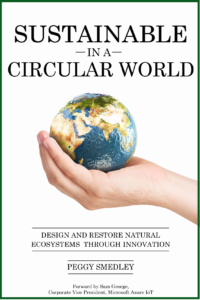Perhaps one of the greatest opportunities the construction industry has at its proverbial fingertips today is to bring together sustainability and infrastructure to create a world of tomorrow that just might stand the test of time. Many recognize this, yet there are still many challenges that stand in the way.
ASCE (American Society of Civil Engineers) acknowledges this as well and has developed a new standard that provides guidance to infrastructure owners on their journey to build a more sustainable infrastructure. The objective here is to help develop and implement sustainable solutions throughout a project’s entire lifecycle.
The ASCE 73-23 standard is a non-mandatory, performance-based consensus standard designed for civil infrastructure ranging from transportation projects to water systems and the energy grid. It encourages project owners to develop and implement a greenhouse gas emission reduction plan to reduce the total infrastructure solution emission by 15% from the solution’s baseline.
The standard focuses on reducing embodied carbon—i.e., greenhouse gas emissions—from the entire process of transporting materials, constructing, operating, and maintaining an infrastructure project.
We know Scope 1—the emissions generated from greenhouse gas emissions that a company makes directly—and Scope 2—the emissions a company makes indirectly like when it purchases electricity—are simply two pieces of the puzzle. Scope 3 is associated with everything else, and I mean everything else like what the suppliers are doing both up and downstream in the supply chain. We also understand in construction this can get particularly tricky with so many stakeholders in the early stages and throughout the lifecycle of the project.
This standard acknowledges this, and its performance-based approach is intended to allow for implementing sustainable strategies on a project-by-project basis, while also involving the project owner in establishing the triple bottomline.
There are a host of other ways this performance-based approach to sustainability aims to lend a hand here including encouraging creativity and innovation in the design and construction community and allowing for optimizing any conflicting environmental, social, and economic requirements of the project.
All in all, it also facilitates the use of rating systems or other tools to measure the sustainability of the project. The ASCE 73-23 standard complements other existing ASCE standards and tools like the Envision rating system, which can be used as a tool to measure achievement of sustainability goals.
At the end of the day, we need both. We need new strong, resilient infrastructure that will keep people safe, and we need it to be sustainable for future generations. Working in tandem, this standard aims to help the construction industry recognize the triple threat of strategies, systems, and tools, which will ultimately build a better tomorrow.
Want to tweet about this article? Use hashtags #construction #IoT #sustainability #AI #5G #cloud #edge #futureofwork #infrastructure


